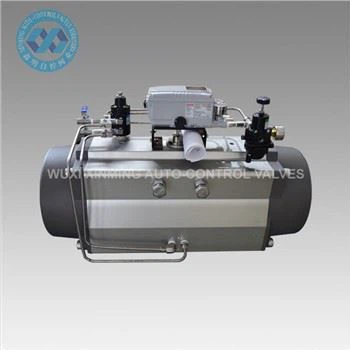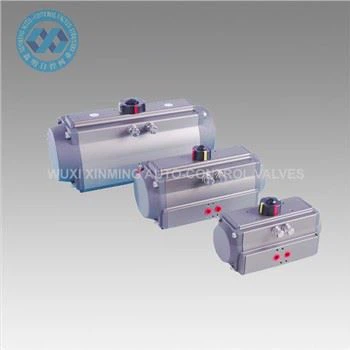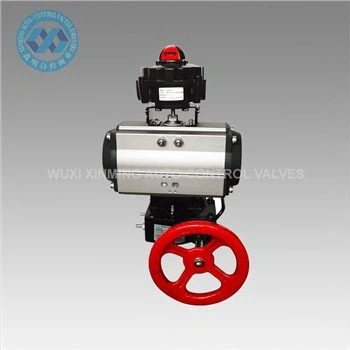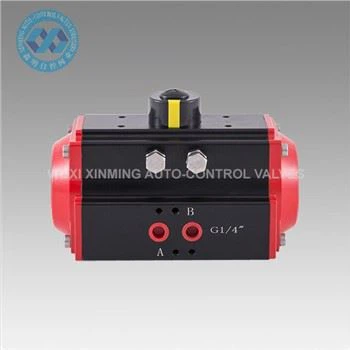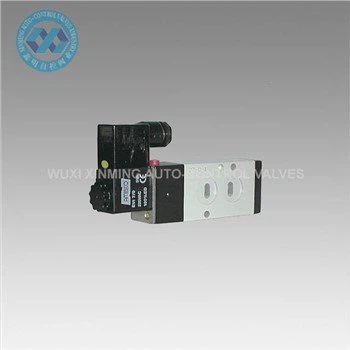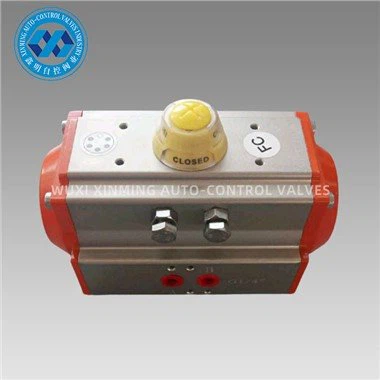Introduction
A double-acting pneumatic actuator is a mechanical device that converts compressed air energy into linear or rotary motion. Unlike single-acting actuators, which rely on a spring return mechanism, double-acting actuators use air pressure on both sides of a piston to generate bidirectional movement. This design provides greater control, efficiency, and reliability in industrial automation and process control applications.

Double-Acting Pneumatic Actuator Working Principle
The double-acting pneumatic actuator operates by supplying compressed air alternately to two chambers within a cylinder. The key components include:
- Piston & Cylinder Assembly – The piston moves linearly within the cylinder when air pressure is applied to either side.
- Air Supply Ports – Two inlet/outlet ports allow air to enter and exhaust from both sides of the piston.
- Piston Rod – Transmits the linear motion to the connected load (e.g., a valve or mechanical linkage).
When air is introduced into one chamber, it pushes the piston in one direction while exhausting air from the opposite chamber. Reversing the air supply direction moves the piston back, enabling precise control over stroke length and speed.

Applications
Double-acting pneumatic actuators are widely used in industries requiring high force, speed, and repeatability, including:
- Valve Automation – Controlling ball, butterfly, and gate valves in oil & gas, water treatment, and chemical processing.
- Manufacturing & Robotics – Operating clamping, lifting, and positioning mechanisms.
- Packaging & Material Handling – Driving conveyor systems and sorting equipment.
- Automotive & Aerospace – Actuating braking and landing gear systems.
Advantages Over Single-Acting Actuators
- Bidirectional Force – Air pressure drives movement in both directions, eliminating reliance on springs and improving response time.
- Higher Precision & Control – Adjustable air pressure allows fine-tuning of speed and position.
- Greater Durability – No spring fatigue, making them suitable for high-cycle operations.
- Compact & Efficient – No need for a return spring, reducing overall actuator size.
Selection Considerations
When choosing a double-acting pneumatic actuator, key factors include:
- Operating Pressure Range – Typically 4–7 bar (60–100 psi).
- Stroke Length & Force Requirements – Determined by load and application needs.
- Material Compatibility – Stainless steel or aluminum for corrosive environments.
- Mounting Style – ISO, NAMUR, or custom configurations.
Conclusion
Double-acting pneumatic actuators offer superior performance in demanding industrial applications due to their bidirectional force, reliability, and precise control. Their versatility makes them essential in automation, process control, and motion systems where efficiency and durability are critical.
If you want to learn more about low-priced products, please visit the following website: www.xm-valveactuator.com


